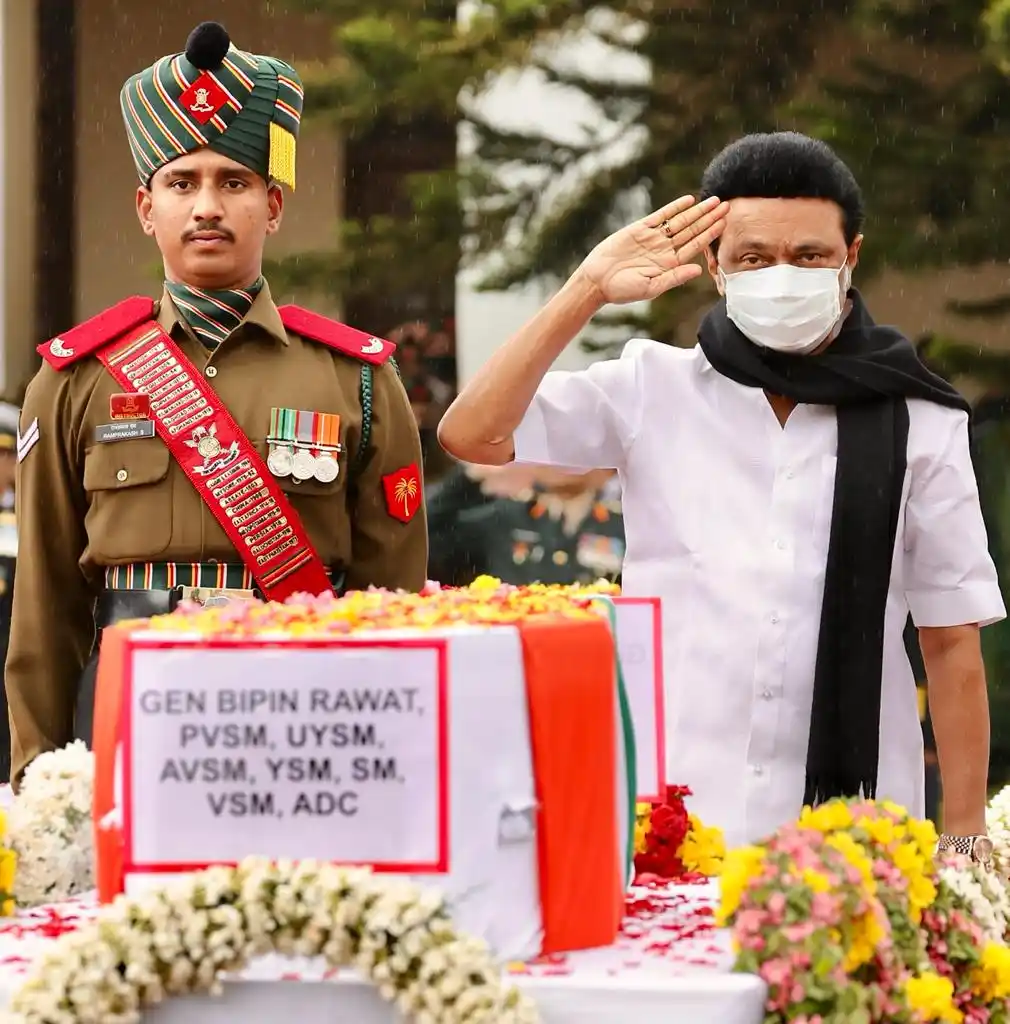As the black box of the ill-fated Indian Air Force Mi-17V5 helicopter which crashed in Tamil Nadu's Coonoor on Wednesday was retrieved, the bodies of 13 people including Chief of Defence Staff General Bipin Rawat, his wife, and 11 armed personnel who were killed in the accident, have been shifted from Madras Regimental Centre (MRC) in Wellington to the Sulur Air Force station.
Black box retrieved from the crash site of the Mi-17V5 helicopter. The black box can reveal the data about the helicopter's final flight situation and cockpit conversations. pic.twitter.com/2qYSUKFEnk
— Prasar Bharati News Services पी.बी.एन.एस. (@PBNS_India) December 9, 2021
The bodies will now be flown to the respective native places of the crash victims. Defence Minister Rajnath Singh had told Rajya Sabha on Thursday morning that the bodies of General Rawat, his wife and the others who died in the crash would be brought to Delhi by the evening.
It was reported that the black box, also known as a flight recorder, was recovered after the investigating authorities expanded their search area at the accident spot from 300 metres to one km.
What is a black box?
The black box recovered today would contain valuable information regarding the IAF helicopter's final moments.
A black box massively helps in reconstructing the events leading to an aircraft accident.
Large commercial aircraft are equipped with two black boxes that record information about a flight – a Cockpit Voice Recorder (CVR) which records radio transmissions and sounds in the cockpit, such as the pilot's voices and engine noises and the other, the Flight Data Recorder (FDR) which monitors parameters such as altitude, airspeed and heading.
After their recovery, the entire information stored in the recorders is processed and extracted using sophisticated computer and audio equipment,
Flight recorders generally meet the crash survivability standards, including impact shock, static crush, high temperature fire and deep sea pressure.
They are also equipped with an Underwater Locator Beacon (ULB), also known as a 'pinger', which is activated when the recorder is immersed in water and can transmit from depths down to 14,000 feet.
It transmits a signal for 90 days to help locate the flight recorder.
The flight crew's voices, as well as other sounds inside the cockpit and their communications with Air Traffic Control (ATC) is all recorded in the Cockpit Voice Recorder.
Also Read: Tri-services team of Air Force, Army & Navy officers investigating Gen Rawat’s helicopter crash




















